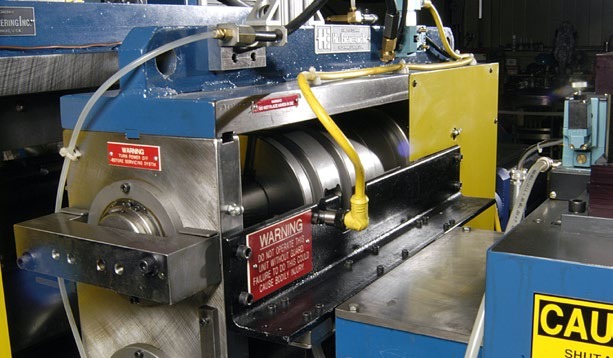In order to make the most out of your roll forming operation, it’s important to choose the right machines and equipment to ensure your systems are operating at maximum efficiency. One way to increase throughput while reducing costs is to incorporate a rotary punching solution into your roll forming process. In this article we wrote for The Fabricator, we’ll take a look at how rotary punching technology has changed over the years and how it can benefit for roll forming process.
New ways to increase production, reduce labor costs, and maximize floor space may be found by revisiting a SO-year-old technology-rotary punching. Many part features and patterns can be punched and formed using pull-through rotary units at up to 300 feet per minute (FPM) in materials as thick as 1/16 inch. In addition, cam technology enables rotary punching and forming of material thicknesses up to 0.105 in. (12 gauge). Servo drives empower line speeds as fast as 650 FPM.
What Rotary Punching Can Do
Examples of rotary-punched or formed features and components are:
- Holes, oblongs, squares, and rectangles, which are made using a simple rotary punch. Comer bead for drywall and angles can be punched on a rotary punch, as well as dense patterns, RC channels, starter strips, nail holes for siding, and filters.
- Precut lines, which are sheared using rotary shear rolls.
- Soffits and building panels, which are punched using a rotary lance or open-slot-style unit.
- Barbed tape, which can be formed using a rotary form roll.



